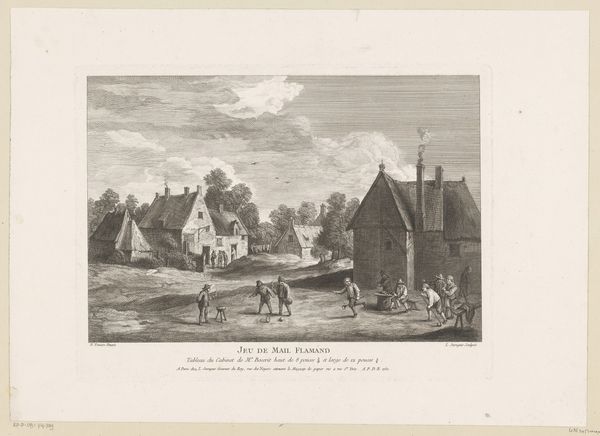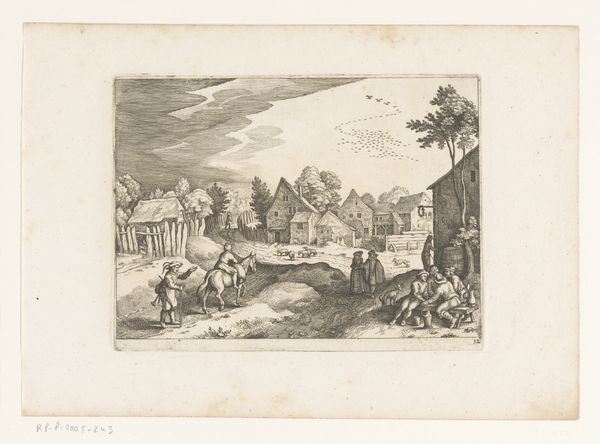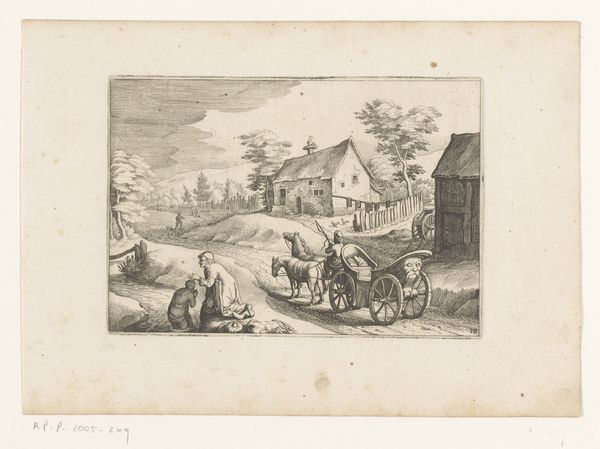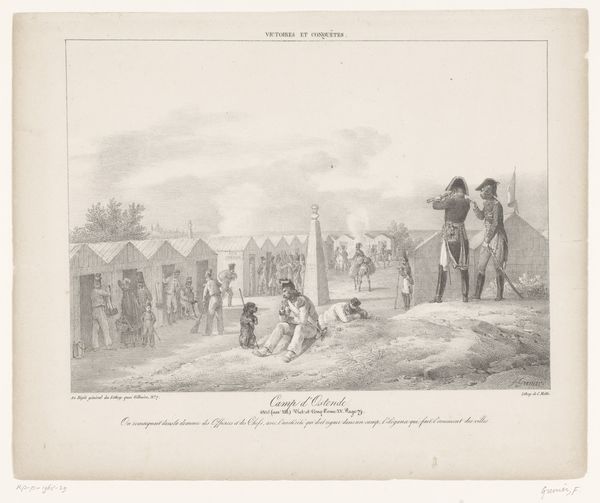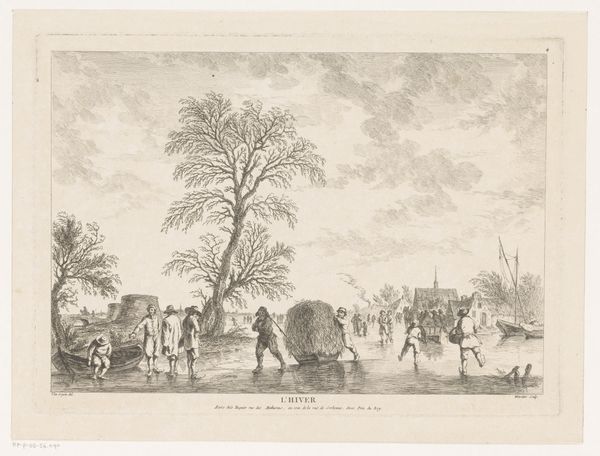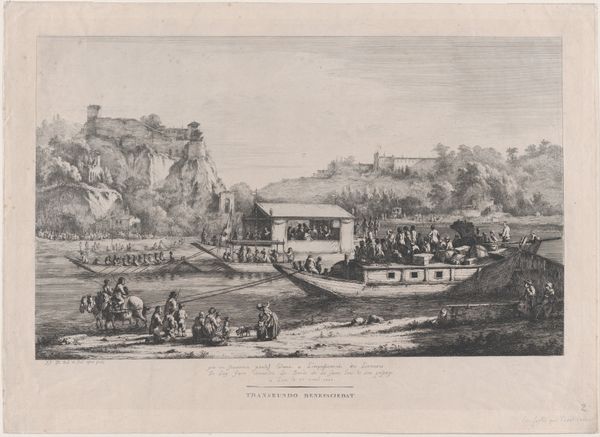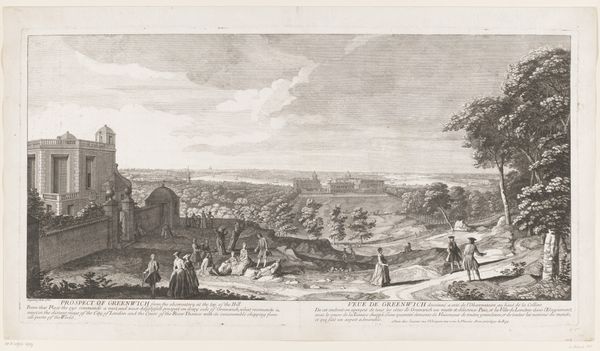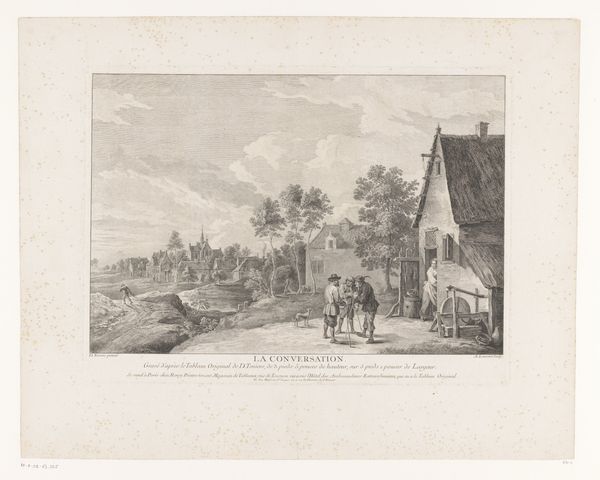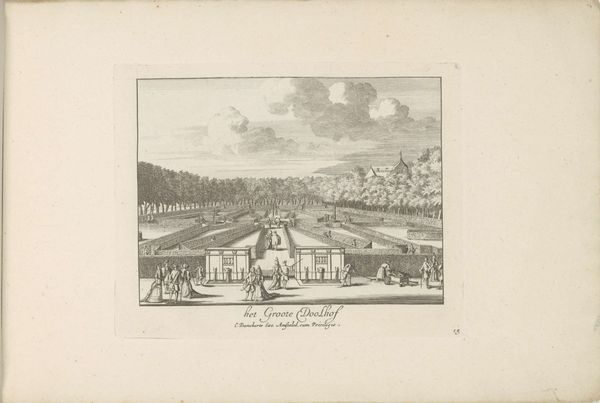
drawing, print, ink, engraving
#
drawing
# print
#
landscape
#
ink
#
orientalism
#
genre-painting
#
engraving
Dimensions: height 140 mm, width 228 mm
Copyright: Rijks Museum: Open Domain
Curator: This print, titled "Legerkamp," provides us a glimpse into 19th-century Orientalist portrayals. Its medium involves both engraving and ink drawing, showcasing a genre-painting landscape. Editor: It strikes me as quite serene. The subdued monochromatic palette enhances a sense of historical distance. But I wonder, what narrative choices might the artist be making here, given that Orientalism is such a fraught perspective? Curator: Absolutely. Its very creation speaks to broader power dynamics between Europe and the East. Images like these were instrumental in constructing and perpetuating Western stereotypes, often exoticizing or othering the depicted cultures. Editor: Look at the details: the traditional tents, the attire, the animals. Aren't these choices potentially problematic? How might viewers interpret this image, and is there a way we can engage critically with its symbols, keeping its historical context in view? The figures and domes also conjure religious symbolism. Curator: This scene invites questions about the ethics of representation, particularly concerning nomadic cultures. The positioning of European art as a means of knowledge and even control is present. We can talk about the rise of Orientalism as a movement within a colonial context, the romanticized images of the East that captivated the Western audience and often obscured complex historical realities. Editor: Exactly! When viewed critically, even apparently ‘benign’ works can reveal the workings of an unequal global system. In the long run, it challenges our presumptions and hopefully invites greater appreciation of non-Western perspectives on identity and culture. Curator: I think so too! Thank you. This look into the depiction of such communities brings attention to our responsibilities as observers. Editor: Yes, it prompts introspection concerning the function and impact of cultural imagery across historical landscapes.
Comments
No comments
Be the first to comment and join the conversation on the ultimate creative platform.
